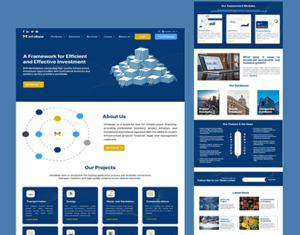
Introduction:
In the vast landscape of the internet, where visibility is key, harnessing the power of WordPress can be a game-changer for your online presence. As a widely-used content management system (CMS), WordPress offers unparalleled flexibility, but to truly stand out, you need to optimize your website for search engines. In this blog post, we’ll delve into the essential steps to boost your WordPress site’s SEO and propel your digital success.
1. Choose an SEO-Friendly Theme:
The foundation of a well-optimized WordPress site starts with selecting an SEO-friendly theme. Look for clean code, mobile responsiveness, and a design that aligns with your brand. A well-crafted theme sets the stage for a positive user experience and search engine recognition.
2. Optimize Permalinks for Readability:
Craft SEO-friendly permalinks by incorporating relevant keywords and maintaining readability. A concise and descriptive URL not only enhances search engine visibility but also makes it easier for users to understand the content of the page.
3. Install an SEO Plugin:
Enhance your WordPress SEO efforts by installing a reputable SEO plugin, such as Yoast SEO or All in One SEO Pack. These tools provide valuable features like on-page optimization suggestions, XML sitemap creation, and control over meta tags, empowering you to fine-tune your content for search engines.
4. Create Quality Content:
Content is king in the digital realm, and WordPress makes it easy to publish high-quality content. Regularly update your website with relevant, informative, and engaging posts. Incorporate strategic keywords naturally within your content to signal to search engines what your pages are about.
5. Optimize Images for Performance:
Images play a crucial role in user engagement, but they can also impact page load times. Optimize your images by compressing them without compromising quality. Use descriptive filenames and alt text to make your images discoverable by search engines.
6. Implement Responsive Design:
With the increasing use of mobile devices, a responsive design is non-negotiable. Google prioritizes mobile-friendly websites in search rankings, making it imperative to ensure that your WordPress site provides a seamless experience across various devices.

7. Build Internal and External Links:
Incorporate a thoughtful internal linking strategy to guide visitors through your content and signal the importance of specific pages to search engines. Additionally, earn credibility by building external links through collaborations, guest posts, and sharing your content on reputable platforms.
8. Enable Social Media Integration:
Leverage the power of social media by integrating sharing buttons into your WordPress posts. Social signals are considered by search engines, and a strong social media presence can contribute to increased visibility and traffic.
Conclusion:
WordPress offers a robust platform for building and optimizing your website, but success requires a strategic approach to SEO. By implementing these steps, you can unlock the full potential of your WordPress site, improve search engine rankings, and attract a broader audience. Stay committed to ongoing optimization, adapt to industry changes, and watch as your WordPress-powered website rises in prominence across the digital landscape.



